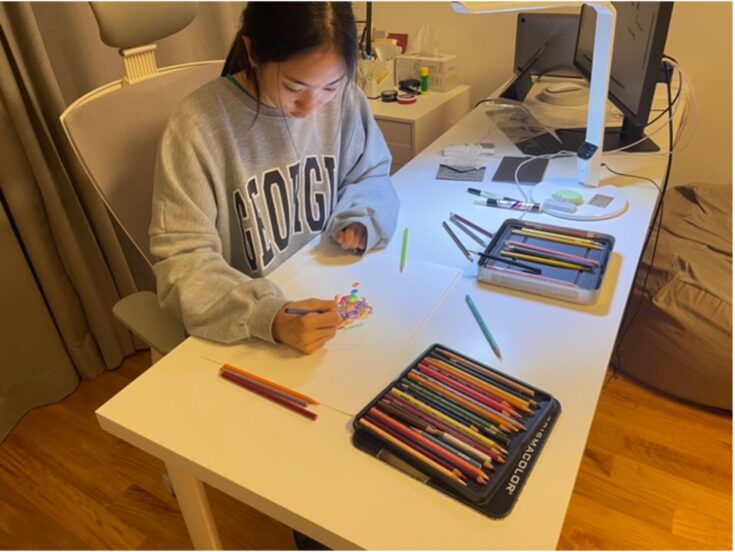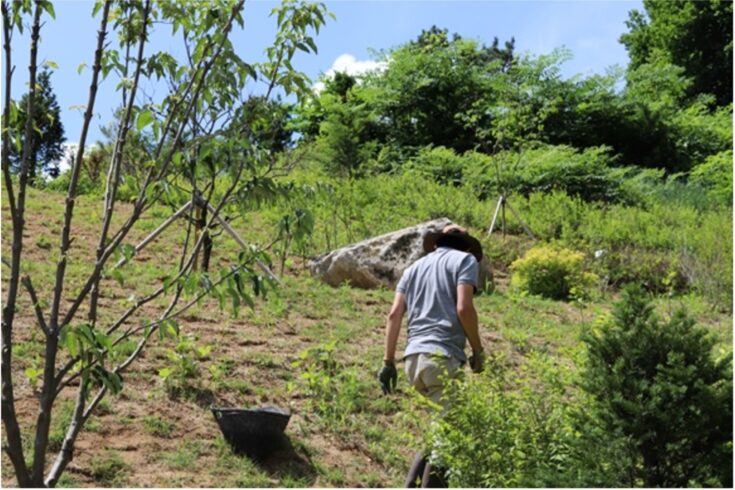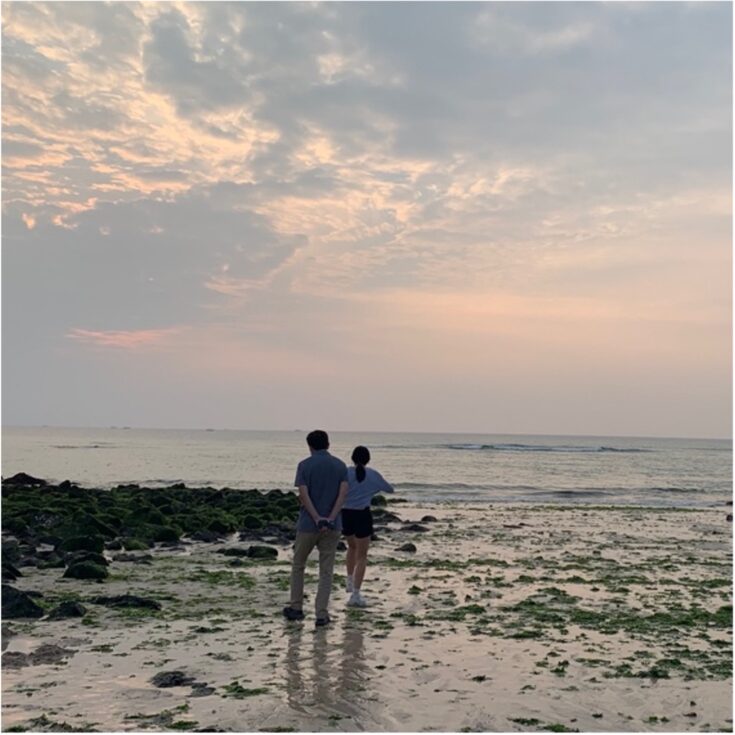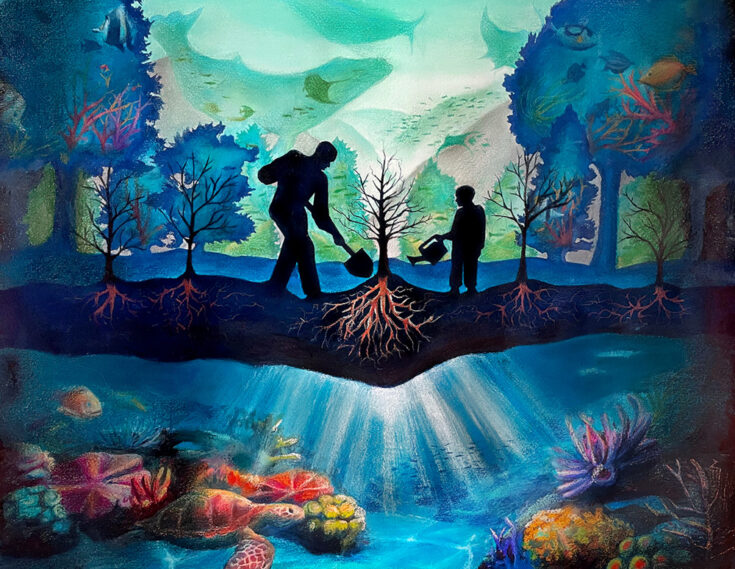We hope that you enjoyed meeting Amy, the first-place winner for ages 11-14 of our 2022 Science Without Borders® Challenge. It is my pleasure to now introduce you to the first-place winner of our Ages 15-19 category, Yeonjae Lee.
Yeonjae is a 16-year-old student at Seoul Foreign School in the Republic of Korea. For the past two years, she has been taking lessons at a private art studio to advance her art skills, so that one day she can become a graphic designer.

After talking to Yeonjae, I found out that she didn’t know much about the ocean prior to participating in the contest. In school, she learned generally about threats to the ocean, but she explains that she didn’t really understand that ocean ecosystems, like coral reefs, are significantly threated. She expressed that conducting research really opened her eyes to ocean conservation, especially using a “Ridge to Reef” approach. Living in Korea, Yeonjae frequently visits the beach. She continued to explain, “The next time I visit to the beach, I’m going to look at a bush, plant, or tree differently. I’m going to wonder, what is the purpose of that plant? Will it help reduce runoff or sedimentation? I never would have thought of the land and sea being interconnected before participating in this contest.”
Learn more from my interview with Yeonjae about what inspired her to create her artwork, what she hopes we gain from her piece, and why she wants to conserve the ocean, and so much more. Our conversation has been lightly edited for length and clarity.
An Interview with Yeonjae Lee
Q: Why are you excited to win this art contest?
A: The Science Without Borders® Challenge is a bit different from other art contests in the way that it has a very specific theme. Many other environmental contests provide contestants with a broad theme such as ‘Ocean Conservation’, which can sometimes hinder contestants from really delving into the details of the topic. However, the Science Without Borders® Challenge provides contestants with a very specific solution and pushes them to really get to know the subject. While making this artwork, I was unsure if the message I wanted to communicate would resonate with other viewers as much as it did with me. However, I think the judges were able to understand the message the way I wanted them to, which excites me greatly as an artist!
Q: What inspired you to create your art piece?
A: My art piece is centered around the specific topic of using reforestation to conserve the ocean. I was initially inspired by the idea of planting trees thanks to my dad. In his free time, my dad enjoys gardening and planting, and I often see him lugging a new young tree into our backyard to add to his display of trees. The amount of care and consideration that he puts into planting, watering, and fertilizing these trees made me realize the power that trees hold.


Q: Why is the ocean important to you?
A: I’ve always been amazed by the sheer enormity of the ocean. No matter how far I try to look, the ocean has always seemed unending. And to think that this colossal body of water is teeming with countless organisms, most of which haven’t even been discovered by humans, is truly mind-blowing. However, the fact that we humans are mindlessly destroying the ocean is disheartening. Who are we to play with the lives of so many living creatures? Time is running out and we must take immediate action to save the ocean.
Q: What do you want people to get out of the artwork you created?
A: I hope my artwork can spark curiosity among the people who see it and lead them to learn more about ridge to reef management plans. What differentiates art from other forms of communication is that it has the ability to make people ask questions. What is this about? Why did the artist choose to place this here? Curiosity is the first step in taking an interest in a topic and taking action to engage in that topic. I hope more people in both my local community and the international community can be inspired to take initiative.
Q: What did you learn by participating in the Science Without Borders® Challenge?
A: I was extremely confused when I first learned about ridge to reef management plans through the Science Without Borders® Challenge website. How was it that activity above land could be such an important factor in the conservation of the ocean? While doing more extensive research, I learned that the ridge to reef strategy provides a holistic approach to marine conservation where we consider the world as a connected system. The idea of a connection between land and the ocean not only intrigued me but also seemed to make the idea of ocean conservation more approachable. It made me realize that without physically going to the ocean, there are countless ways that we can take action on land.
Jeonjae’s Winning Artwork:

ARTIST’S STATEMENT: Ridge to reef management plans connect human activities that take place on land with the ocean. The specific solution that I have chosen to address with my artwork is reforestation. The roots of trees act as forest buffers and help prevent pollution from entering the water by stabilizing the sediment. The depiction of a father and son planting a young tree represents a hopeful future where the current generation can hold hands with the next generation to save the ocean. The illuminating roots of the trees depict the power that they hold in saving coral reefs. In the background, the trees and the sky seem to reflect the ocean to represent the connection between the world above and below the water. Finally, the ocean beneath is glowing with vibrant coral reefs and sea animals – an ocean that we must save.